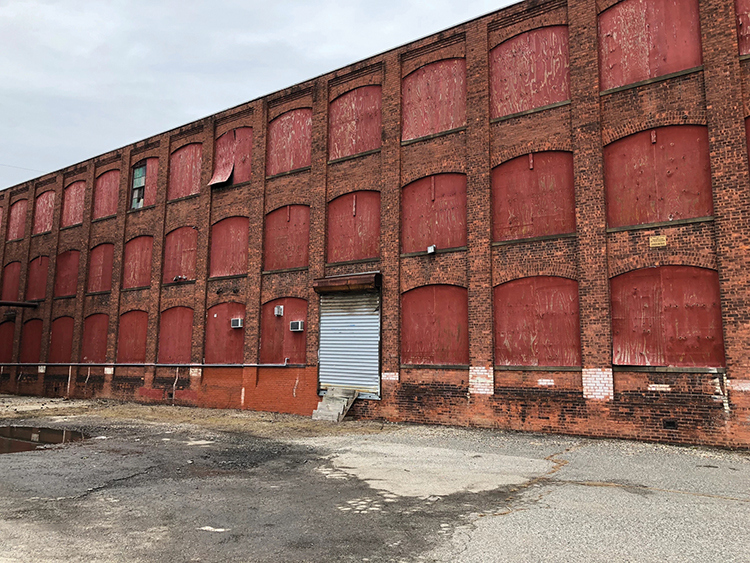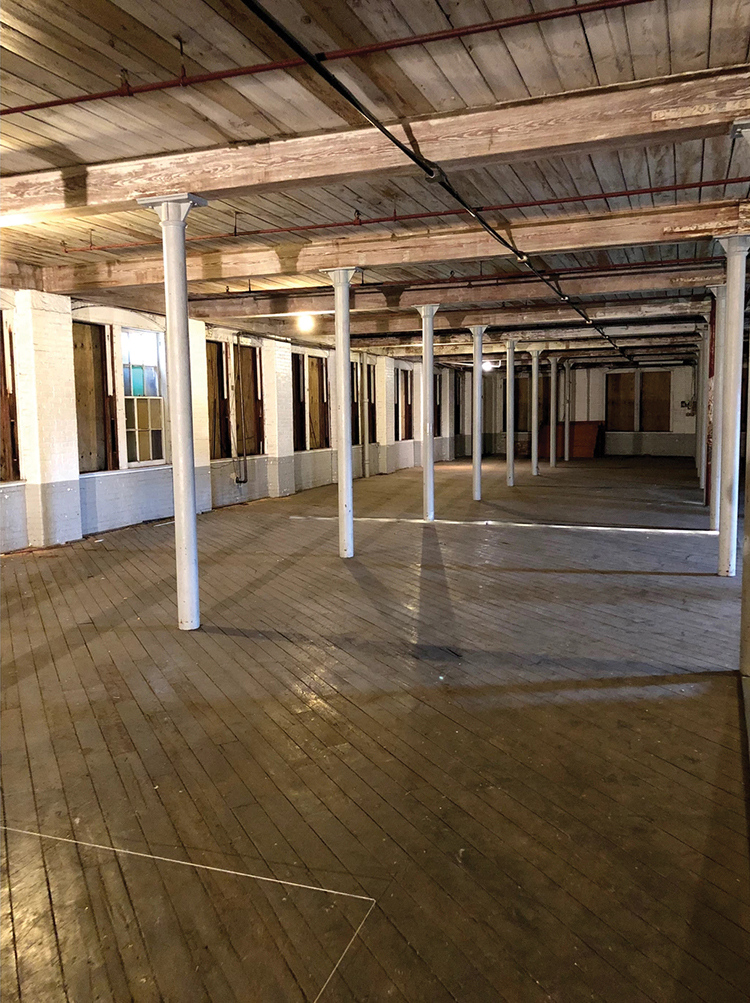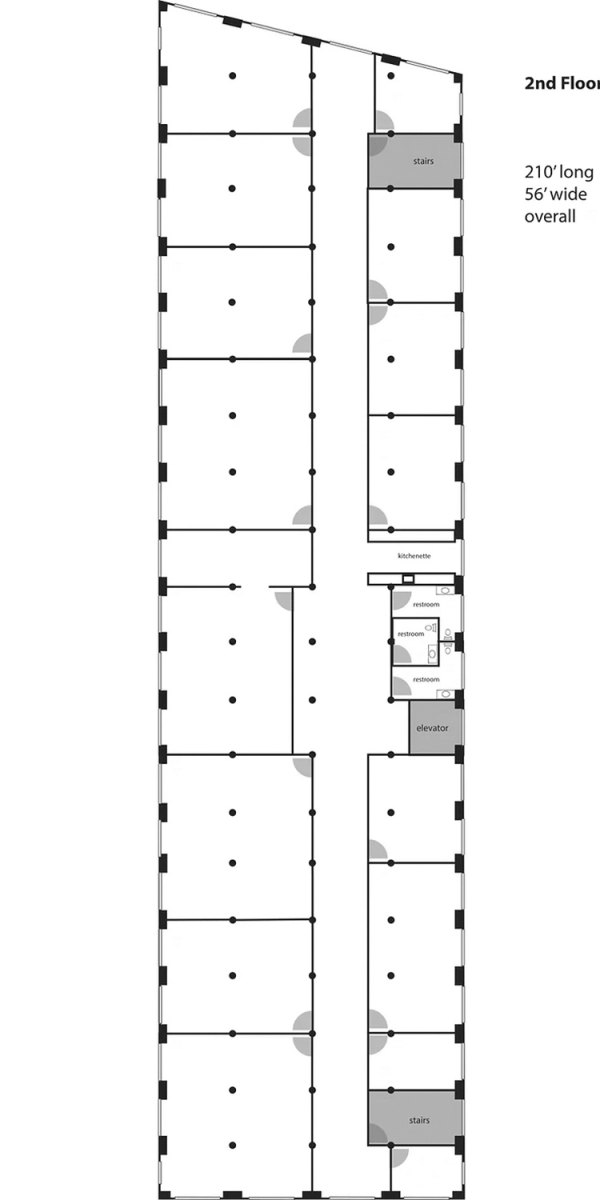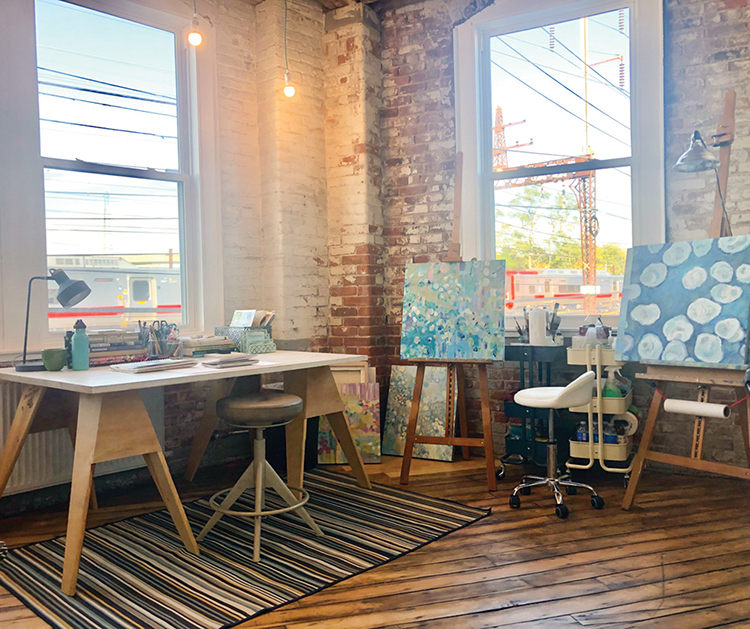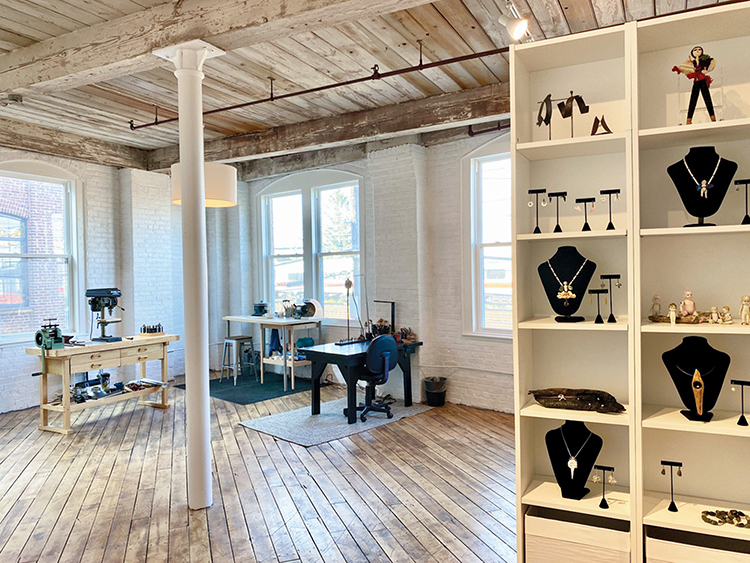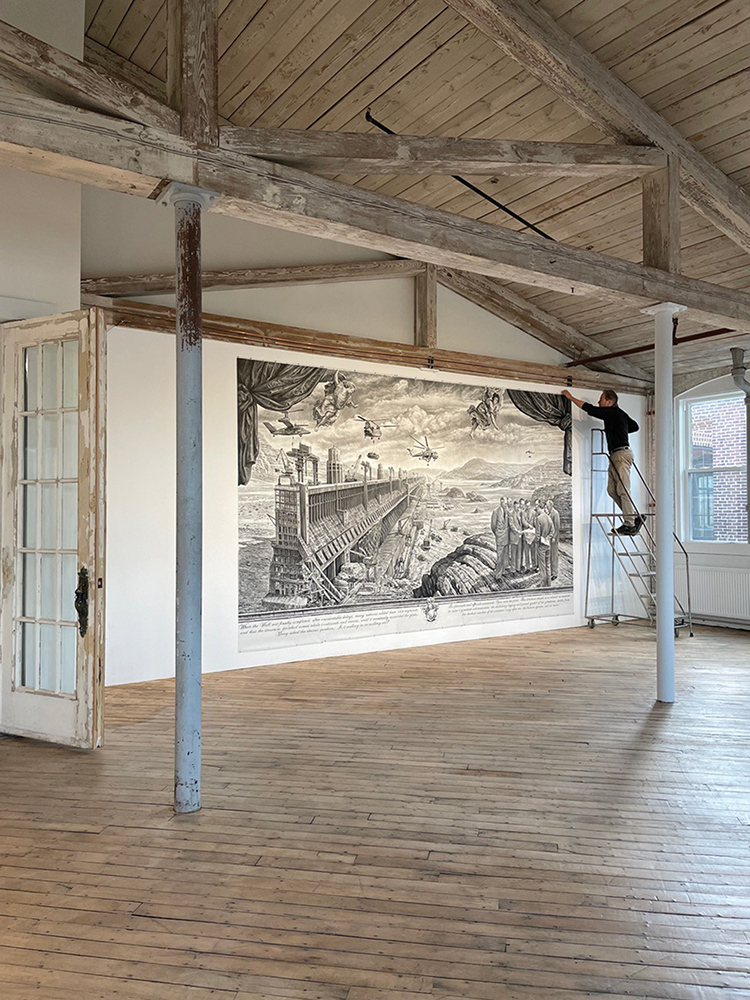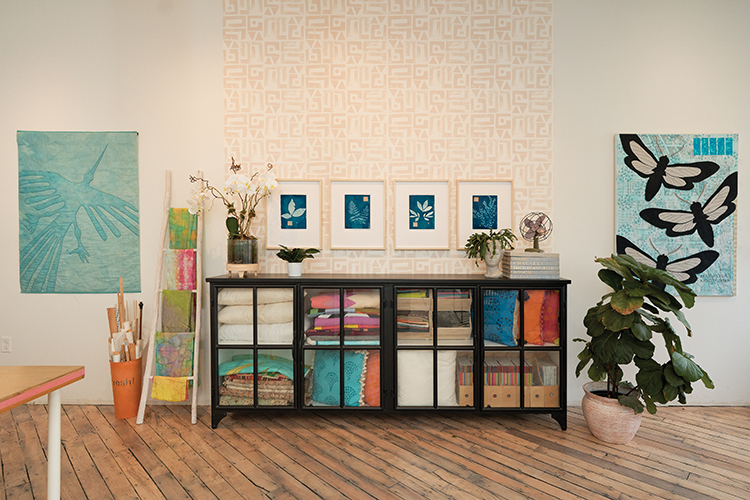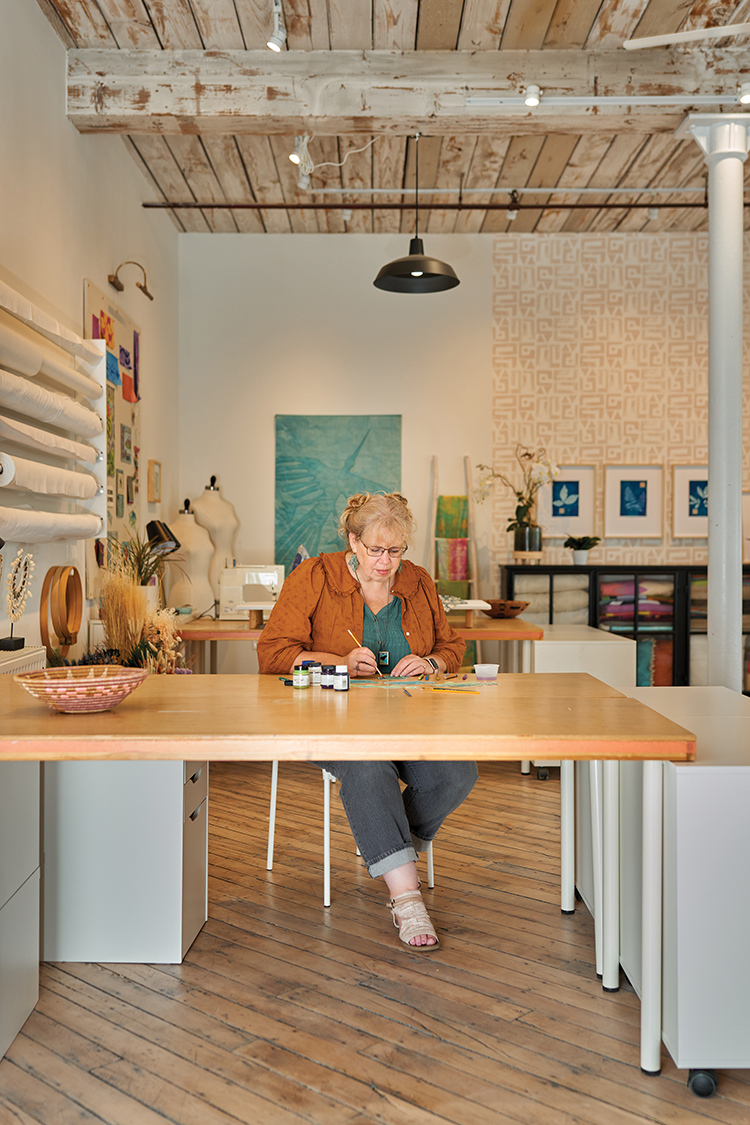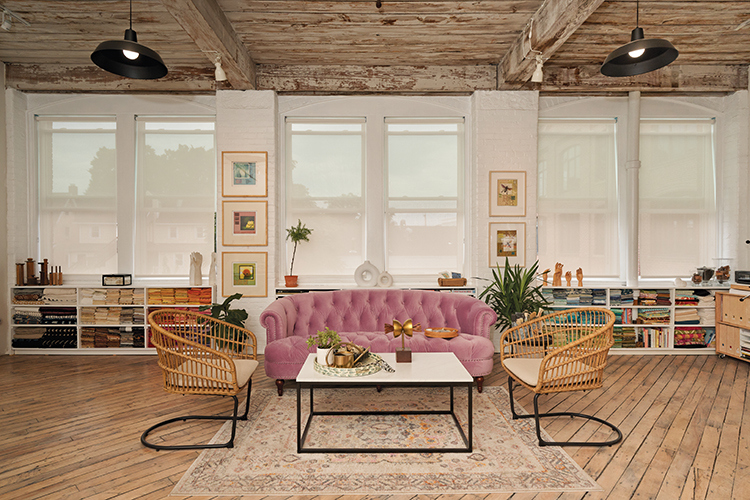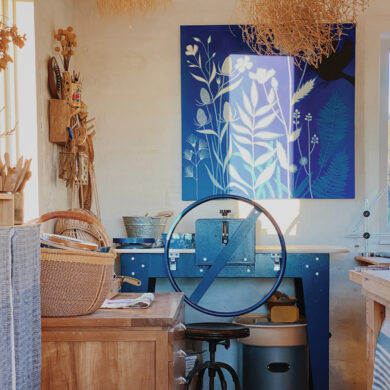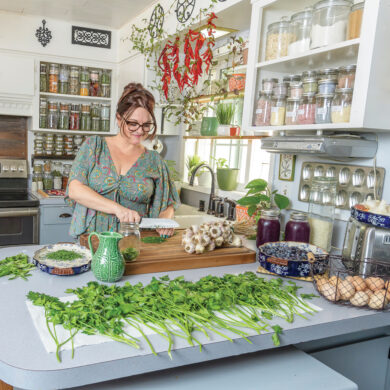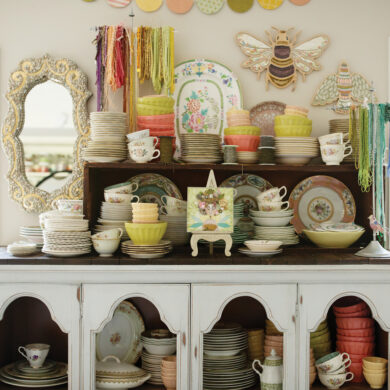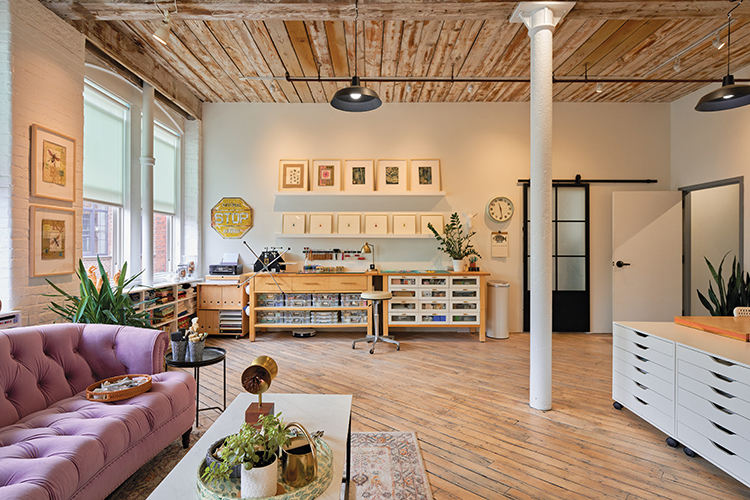
What would your ideal studio look like? How would you set it up? If you were starting with a completely blank slate, where would you start? I had three long years to think about just those questions! Like many of us, I’ve had my fair share of studios, small and larger, but my current studio is my favorite.
When our daughter, Samantha, was little and space was at a premium, I converted a small closet in the living room with bifold doors into a very compact studio space. While I’ve worked from home studios in various houses (sunrooms, spare bedrooms or living rooms, for example), I really enjoy working from a studio in a building with other artists. I thrive in collaboration with other creative folk and enjoy working with a creative hum around me.
This is the third commercial artist building and community that I’ve belonged to. The others were in an old schoolhouse and a locomobile factory, respectively. Over three years ago, I started the journey to find a new home for the existing artist community my husband, Carlos, and I were a part of. Along with a small group of the artists, we toured a wide variety of old factories, schools and municipal buildings in our city of Bridgeport, Connecticut, before we found the building we now occupy.
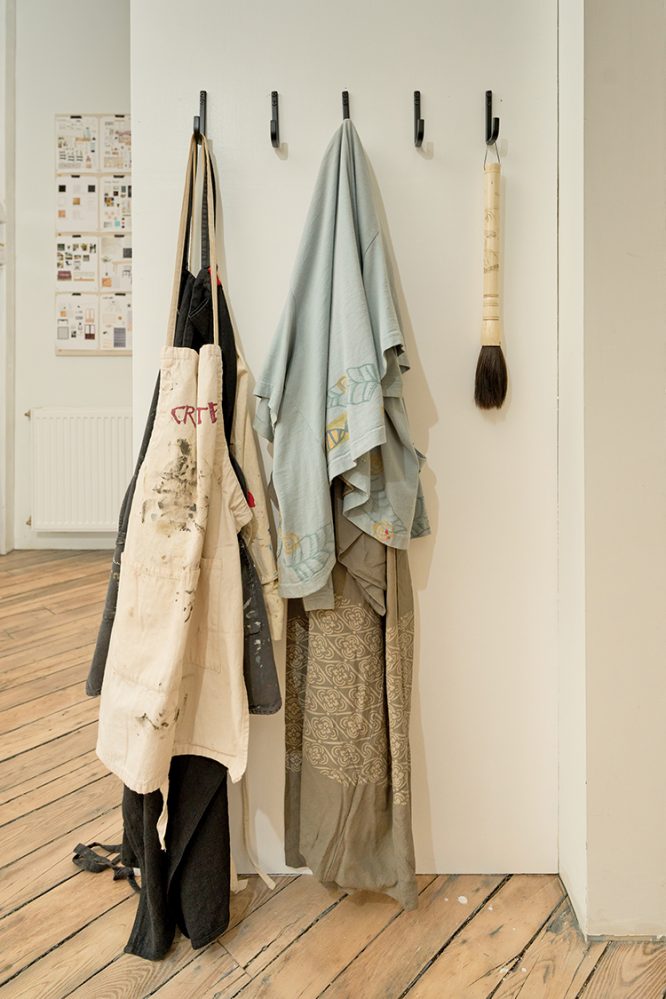
The former Crown Corset Factory once employed upwards of 400 women making corsets and hoop skirts in the early 1900s. The factory had sat vacant and boarded up for over 40 years by the time we looked at it. Luckily, I was able to picture exactly what it would look like filled with artist studios. As I did with most of the buildings we viewed, I created a “conceptual drawing,” or layout, of how many studios we could fit on each of the three floors to take advantage of the many large windows; how wide the hallways could be; what size art gallery would be appropriate; and more.
The answers to these determine whether a building is viable from a financial standpoint, so it was a necessary step each time. We were extremely fortunate that the new owners of the corset factory were very interested in seeing it become filled with art studios and willing to finance the renovation. They have been so supportive of helping all of us realize our studio dreams. There is a synergy in the universe where sometimes exactly the right people come together at exactly the right time.
“You can’t sit around and wait for somebody to say who you are. You need to write it and paint it and do it.”
— Faith Ringgold
For the last three years, we’ve all been learning and working harder than we ever have in giving the old factory new life. Official plans were drawn up, contractors were hired and work began, despite the pandemic, supply chain issues and myriad small daily problems to be solved. To keep renovation costs down, the artists pitched in and helped with the work that we could do — painting walls, sanding floors, assembling track lights, caulking (so. much. caulking.) and a lot more.
During those three years, I was on the job site nearly every day, overseeing workers, answering questions about things like outlet and lighting placement, door swings and paint finishes, and simply keeping the project moving along. And every day that I was there working, I would also visit the studio space I picked out for myself. I would spend time imagining where I would place my tables, basking in the light streaming in the new energy-efficient windows, dreaming of the day I would be there working on my art.
Over the course of renovation, I designed and re-designed my studio layout on the computer, creating moodboards to see how potential furniture would fit and how it would look together. As someone who makes art and also works on interior design and space planning, how a room looks and feels is as important to me as how well it functions. A beautiful studio that reflects my aesthetic, allows me to experiment with design ideas and is highly organized means that I’m at my most productive when I’m in it.
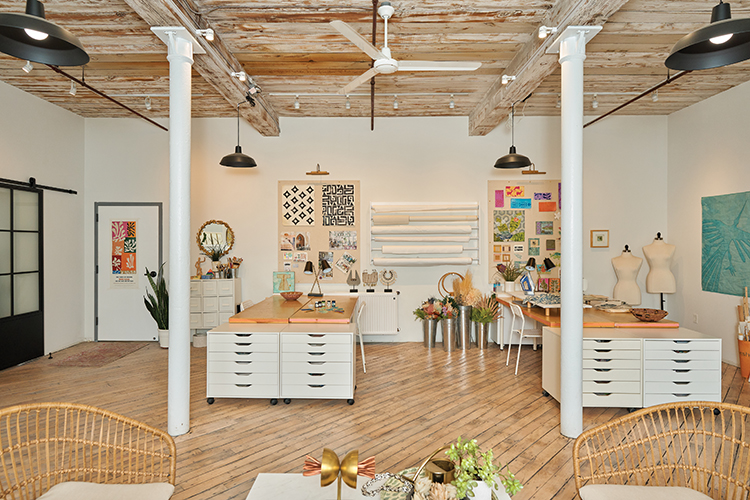
“Artists: You are not JUST an artist. You are many things. You can do so many things. All of those things will end up in your art, either way. Just be as free as you can be. That’s the job. It also takes discipline.”
— Jerry Saltz
Now that the building is finally finished, and I’m all moved into my studio, I’m enjoying the fact that I was able to customize it exactly to suit my needs. I am a printmaker, a fiber artist and a surface designer. Each of these media has their own working and storage needs. I’ve created zones for each medium. I have a set of tables for sewing and ironing — I even built a new, larger ironing board! Wet media that use paint and ink, like printmaking and surface design, are done on a second set of large tables.
Two tall kitchen islands with lots of drawers for storage are placed against one wall. One holds a small etching press and a large piece of glass for rolling out ink, with a self-healing mat on the other for cutting fabric or mat boards. I love when every supply and every tool has a “home.” It makes it much easier to return things to where they belong and keep my studio neat for the next project. Visual clutter is very distracting to me, so I try to keep storage behind closed doors or in containers.
I also often make my own frames and display boxes or structures for my art, so this requires a place to do woodworking and store my hand tools, power tools and supplies. My studio has a smaller separate area off the main area for woodworking. It works so well to have that in another space to control the dust and noise.
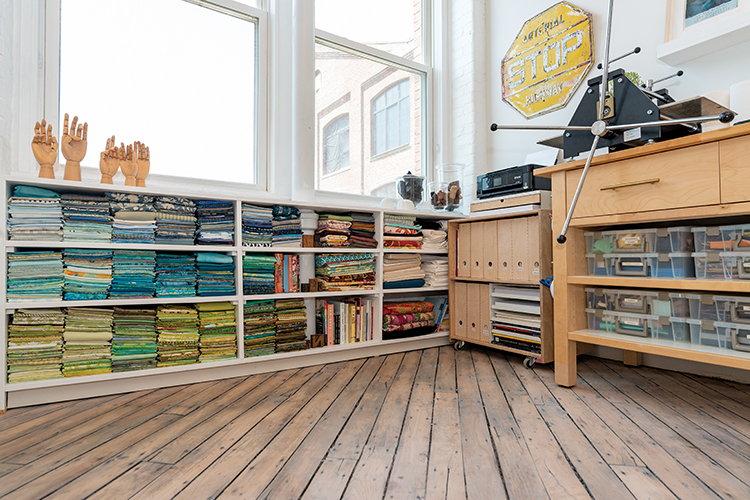
I built bookcases under each set of windows in my studio to hold many of my supplies — fabric sorted by color, books for inspiration and reference in the main area, and in the woodworking area, there’s paint, stain and tools. It was such a boon to be able to create custom extra storage from what would have been wasted space.
Even being in the midst of a bustling, gritty, diverse city, there is still nature to appreciate and be inspired by. The “famous” Bridgeport parrots perch in the trees just outside my studio windows. Urban legend has it that these large green parrots are descendants from a shipment of parrots that escaped at John F. Kennedy International Airport back in the 1970s.
Regardless of how it happened, they’re here now in large numbers — colorful, thriving and raucously, noisily alive. The ocean of Long Island Sound is a few blocks away, and many evenings find me wandering the shore or the boardwalk before I head home, breathing in the sea air, clearing my head, re-centering myself. Water is so restorative to me. The ebb and flow of the tides, the sheer scale of the sea, the smells and sounds and sights all remind me that nothing lasts (good or bad) and that the now is what’s most important.
“Do you know why birds sing just before dawn? Scientists believe it’s to tell their mates that they made it through the night, as a way of saying, ‘I’m still here.’ Maybe that’s why we sing, too, why we create art — as a way of saying, ‘I made it. I’m still here.’”
— Jeff Goins
Whenever I’m working in my studio, I imagine the women who used to work in the factory. There’s so much great “girl power” in these old brick walls. The workers at Crown Corset joined a walkout with female workers from the other corset factories in Bridgeport in the summer of 1915 to strike for eight-hour workdays, which became the standard for all workers nationwide a few years later. We found many artifacts of the original factory during the renovation. We discovered timecards, pattern templates made of metal used to cut the fabric pieces for corsets, delicate white shell buttons, and tens of thousands of needles and pins in the spaces between the original maple floorboards.
Being part of the history of the building is inspirational. I walk up the same well-trod stairs as hundreds of women did before me, touching the same worn bannisters, looking out on the same city. I sit in front of the massive windows, sewing as so many did previously. Having worked on my studio with my own two hands has been incredibly satisfying. It’s the result of literal blood (six stitches in my thumb one summer day two years ago), sweat and tears, and is now exactly what I always imagined it would be.
It has been a very interesting experience to see a large number of diverse artists all move into the same building practically at the same time, as we did. Every studio started with the same empty box — the same windows, ceilings, walls and floor. And now, nearly a year later, each space is distinctly different, reflecting its owner and their art, each customized for different uses.
It was fun to share resources with people going through nearly the same thing at the same time — finding a mover, choosing lighting (even color temperature for lightbulbs!), arranging furniture, picking out window coverings (the sun is strong at certain times of the day), or deciding what art to hang in the hallways for visitors. It’s been a phenomenal bonding experience and fascinating to see each other’s journeys.
More on Metro Art Studios: www.MetroArtStudios.com
“I’m not interested in competing with anyone. I hope we all make it.”
— Erica Cook
I work mainly in fabric and paper, printing and stitching on both, and combining both materials in much of what I do. Many of my pieces reflect my intense fascination with insects; with natural, organic texture; and with the forms of letters. I consider myself a perpetual student and strive to learn at least one new thing each day. I love esoteric bits of information, and my creative process will often start with research.
For example, if I have chosen a beetle to carve a block of or a moth to stitch, I will research its habitat, its Latin name, what it eats and how it’s affected by its environment. These bits of data may make their way, albeit subtly, into a finished piece. Little hidden details can make for a richer experience for the viewer, so I’ll add tiny stitches in patterns or use letter forms to create “secret codes” or add colors or forms all relating to the research I’ve done.

What would your ideal studio look like? How would you set it up? If you were starting with a completely blank slate, where would you start? I had three long years to think about just those questions! Like many of us, I’ve had my fair share of studios, small and larger, but my current studio is my favorite.
When our daughter, Samantha, was little and space was at a premium, I converted a small closet in the living room with bifold doors into a very compact studio space. While I’ve worked from home studios in various houses (sunrooms, spare bedrooms or living rooms, for example), I really enjoy working from a studio in a building with other artists. I thrive in collaboration with other creative folk and enjoy working with a creative hum around me.
This is the third commercial artist building and community that I’ve belonged to. The others were in an old schoolhouse and a locomobile factory, respectively. Over three years ago, I started the journey to find a new home for the existing artist community my husband, Carlos, and I were a part of. Along with a small group of the artists, we toured a wide variety of old factories, schools and municipal buildings in our city of Bridgeport, Connecticut, before we found the building we now occupy.

The former Crown Corset Factory once employed upwards of 400 women making corsets and hoop skirts in the early 1900s. The factory had sat vacant and boarded up for over 40 years by the time we looked at it. Luckily, I was able to picture exactly what it would look like filled with artist studios. As I did with most of the buildings we viewed, I created a “conceptual drawing,” or layout, of how many studios we could fit on each of the three floors to take advantage of the many large windows; how wide the hallways could be; what size art gallery would be appropriate; and more.
The answers to these determine whether a building is viable from a financial standpoint, so it was a necessary step each time. We were extremely fortunate that the new owners of the corset factory were very interested in seeing it become filled with art studios and willing to finance the renovation. They have been so supportive of helping all of us realize our studio dreams. There is a synergy in the universe where sometimes exactly the right people come together at exactly the right time.
“You can’t sit around and wait for somebody to say who you are. You need to write it and paint it and do it.”
— Faith Ringgold
For the last three years, we’ve all been learning and working harder than we ever have in giving the old factory new life. Official plans were drawn up, contractors were hired and work began, despite the pandemic, supply chain issues and myriad small daily problems to be solved. To keep renovation costs down, the artists pitched in and helped with the work that we could do — painting walls, sanding floors, assembling track lights, caulking (so. much. caulking.) and a lot more.
During those three years, I was on the job site nearly every day, overseeing workers, answering questions about things like outlet and lighting placement, door swings and paint finishes, and simply keeping the project moving along. And every day that I was there working, I would also visit the studio space I picked out for myself. I would spend time imagining where I would place my tables, basking in the light streaming in the new energy-efficient windows, dreaming of the day I would be there working on my art.
Over the course of renovation, I designed and re-designed my studio layout on the computer, creating moodboards to see how potential furniture would fit and how it would look together. As someone who makes art and also works on interior design and space planning, how a room looks and feels is as important to me as how well it functions. A beautiful studio that reflects my aesthetic, allows me to experiment with design ideas and is highly organized means that I’m at my most productive when I’m in it.

“Artists: You are not JUST an artist. You are many things. You can do so many things. All of those things will end up in your art, either way. Just be as free as you can be. That’s the job. It also takes discipline.”
— Jerry Saltz
Now that the building is finally finished, and I’m all moved into my studio, I’m enjoying the fact that I was able to customize it exactly to suit my needs. I am a printmaker, a fiber artist and a surface designer. Each of these media has their own working and storage needs. I’ve created zones for each medium. I have a set of tables for sewing and ironing — I even built a new, larger ironing board! Wet media that use paint and ink, like printmaking and surface design, are done on a second set of large tables.
Two tall kitchen islands with lots of drawers for storage are placed against one wall. One holds a small etching press and a large piece of glass for rolling out ink, with a self-healing mat on the other for cutting fabric or mat boards. I love when every supply and every tool has a “home.” It makes it much easier to return things to where they belong and keep my studio neat for the next project. Visual clutter is very distracting to me, so I try to keep storage behind closed doors or in containers.
I also often make my own frames and display boxes or structures for my art, so this requires a place to do woodworking and store my hand tools, power tools and supplies. My studio has a smaller separate area off the main area for woodworking. It works so well to have that in another space to control the dust and noise.

I built bookcases under each set of windows in my studio to hold many of my supplies — fabric sorted by color, books for inspiration and reference in the main area, and in the woodworking area, there’s paint, stain and tools. It was such a boon to be able to create custom extra storage from what would have been wasted space.
Even being in the midst of a bustling, gritty, diverse city, there is still nature to appreciate and be inspired by. The “famous” Bridgeport parrots perch in the trees just outside my studio windows. Urban legend has it that these large green parrots are descendants from a shipment of parrots that escaped at John F. Kennedy International Airport back in the 1970s.
Regardless of how it happened, they’re here now in large numbers — colorful, thriving and raucously, noisily alive. The ocean of Long Island Sound is a few blocks away, and many evenings find me wandering the shore or the boardwalk before I head home, breathing in the sea air, clearing my head, re-centering myself. Water is so restorative to me. The ebb and flow of the tides, the sheer scale of the sea, the smells and sounds and sights all remind me that nothing lasts (good or bad) and that the now is what’s most important.
“Do you know why birds sing just before dawn? Scientists believe it’s to tell their mates that they made it through the night, as a way of saying, ‘I’m still here.’ Maybe that’s why we sing, too, why we create art — as a way of saying, ‘I made it. I’m still here.’”
— Jeff Goins
Whenever I’m working in my studio, I imagine the women who used to work in the factory. There’s so much great “girl power” in these old brick walls. The workers at Crown Corset joined a walkout with female workers from the other corset factories in Bridgeport in the summer of 1915 to strike for eight-hour workdays, which became the standard for all workers nationwide a few years later. We found many artifacts of the original factory during the renovation. We discovered timecards, pattern templates made of metal used to cut the fabric pieces for corsets, delicate white shell buttons, and tens of thousands of needles and pins in the spaces between the original maple floorboards.
Being part of the history of the building is inspirational. I walk up the same well-trod stairs as hundreds of women did before me, touching the same worn bannisters, looking out on the same city. I sit in front of the massive windows, sewing as so many did previously. Having worked on my studio with my own two hands has been incredibly satisfying. It’s the result of literal blood (six stitches in my thumb one summer day two years ago), sweat and tears, and is now exactly what I always imagined it would be.
It has been a very interesting experience to see a large number of diverse artists all move into the same building practically at the same time, as we did. Every studio started with the same empty box — the same windows, ceilings, walls and floor. And now, nearly a year later, each space is distinctly different, reflecting its owner and their art, each customized for different uses.
It was fun to share resources with people going through nearly the same thing at the same time — finding a mover, choosing lighting (even color temperature for lightbulbs!), arranging furniture, picking out window coverings (the sun is strong at certain times of the day), or deciding what art to hang in the hallways for visitors. It’s been a phenomenal bonding experience and fascinating to see each other’s journeys.
More on Metro Art Studios: www.MetroArtStudios.com
“I’m not interested in competing with anyone. I hope we all make it.”
— Erica Cook
I work mainly in fabric and paper, printing and stitching on both, and combining both materials in much of what I do. Many of my pieces reflect my intense fascination with insects; with natural, organic texture; and with the forms of letters. I consider myself a perpetual student and strive to learn at least one new thing each day. I love esoteric bits of information, and my creative process will often start with research.
For example, if I have chosen a beetle to carve a block of or a moth to stitch, I will research its habitat, its Latin name, what it eats and how it’s affected by its environment. These bits of data may make their way, albeit subtly, into a finished piece. Little hidden details can make for a richer experience for the viewer, so I’ll add tiny stitches in patterns or use letter forms to create “secret codes” or add colors or forms all relating to the research I’ve done.





